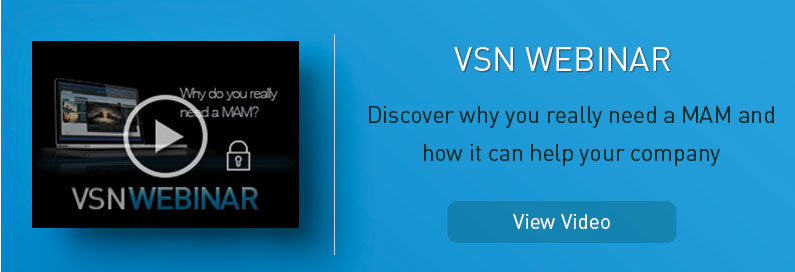The MAM should be the core of any audiovisual company, and it must be flexible enough to work with third party systems, in order to have everything under one single roof. We truly believe that any MAM tool should always become the single point of control or the balance scorecard of an audiovisual company. In few words, it must be the place where all information can be found, edited, distributed, reported and archived. Mr. Michael Earl Javier, VSN’s Product Manager, talks in this article about what to look for in any successful MAM system.

The world of TV and broadcasting has changed in the last five years more than in the previous five decades. The main cause of this revolution has been the irruption of second screens, Internet-connected television and the use of social media to access and share multimedia content. The public has no longer a passive relation with TV, but a proactive one, demanding access from any device, place and time to its favourite series, movies and TV programs under their terms.
This enormous changes have altered the traditional workflow of editing, managing, distributing, archiving and broadcasting. The relation with the audience is not the same anymore, and adequately monetizing the content is the key to adapt and survive. An advanced Media Asset Management (MAM) system is the best ally for that.
As a media management tool, a powerful and advanced system must present some requirements to ensure its adaptation to the modern needs of audiovisual companies. And we have listed 10+1 requirements of a MAM to help you get a clearer vision of the matter:
1. Ingest and transcoding
The MAM system is the organizer and manager of the audiovisual assets of a company. That is why it must be able to control those asset from the very moment of their ingestion in the system. It must also be capable of changing the format of those files depending on the needs of each moment.
2. File Cataloguing, Retrieval and Distribution
In order to save time and resources, it is essential to have all files correctly organized and easy-to-access for its retrieval and distribution, to offer a clear and transparent vision of the resources of a company and allow its use when necessary.
3. Open architecture
It is essential for the system to be open, in order to allow integration with the company’s hardware and software. Being capable of integrating third-party solutions in the system in a simple way is essential to expand, when necessary, the installed solution.
4. Permits management
Users from a single company have different needs, so their access to the system and resources must be correctly administered. A good permits management allows to organize users in an efficient and productive way.
5. Cloud ready
A Web interface and having an integrated acceleration protocol for IP networks allows for a deployment of the whole system (MAM in Cloud) or part of the system (Hybrid Cloud) in platforms such as Windows Azure, Amazon or Cloud. This way, costs are lowered dramatically.
6. Multisite and multiplatform compatible
Multiplicity of platforms and screens is a consolidated technological trend. That´s why an organization with a multisite and multiplatform MAM has all the necessary tools to get the most profit from its asset in all possible formats and destinies.
7. Asset-associated logic
Every type of asset needs to have an associated logic in order to launch automated workflows directly from them. This way, companies can automate repetitive tasks and dedicate their time to create quality contents.
8. Customizable data models
Different clients have different needs. Classification for areas and the chance to determine different metadata layers depending on the type of asset make it possible to define the system as it were custom-made, increasing its efficiency and productivity.
9. Enhanced search features
For a broadcast company, it is essential to locate in a fast and comfortable way all its media assets. A tool for quick and advanced searching allows to save time and to access every asset when it is needed, without losing time.
10. Scalability
When choosing a MAM system it is necessary to be sure that it can grow as the business grow. If not, the risk of having to substitute it in some time is very high. That’s why a scalable system is a must.
10+1. Security
Assets are the most valuable assets in an audiovisual company. It management must be carried out with the most strict security protocols, in order to avoid losses or damages, and with the adequate encryption of the content, to keep it safe at all times.
The evolution of the broadcast market has made it necessary to have a MAM system to help companies organize their assets and get the most profit from them. In a highly competitive environment, multi screen and multi format, only companies with advanced technology will manage to be up to their clients demands and overcome their competitors. And a powerful MAM system is the best companion to reach that goal.

